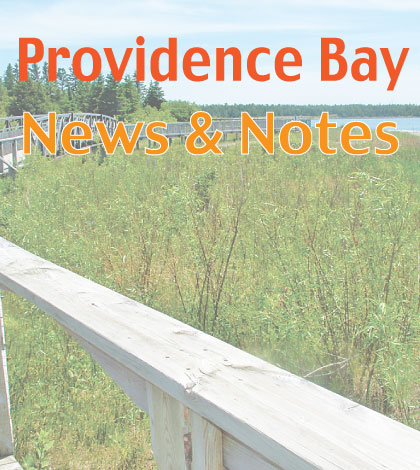MANITOULIN—The Northern Ontario School of Medicine (NOSM) is quickly gaining an international reputation for best practices in the areas of rural and indigenous medicine delivery. All of this complements the medical school’s storied success in encouraging graduates who have studied here in the North to settle in the North. A team of Swedish medical professionals travelled to Sudbury to visit the NOSM facilities and took the opportunity to come to Manitoulin Island to learn from the NOSM medical professionals working and studying here.
“We had a group of seven visitors, four from medical facilities and three members of the local government in Northern Sweden,” said NOSM dean and professor Dr. Roger Strasser.
In April, Dr. Strasser visited the Northern region of Sweden which shares many similarities with Northern Ontario when he attended the Society of Rural Medicine conference in that country. “They learned about the programs we had made and wanted to come and see them first hand,” he said.
“We heard Dr. Roger Strasser speak about the Northern Ontario School of Medicine in Sweden about a year ago,” said Dr. Herbert Sandström, associate professor at Umeå University. “His talk about the school really piqued our interest in what you are doing here and how it can help us in Sweden.”
Comprised of medical leaders from Umeå University, the northern-most university in Sweden, and leaders from health organizations in Sweden, the delegation came to learn about many aspects of NOSM’s educational model. Most notably, they were interested in how NOSM collaborates with local communities and health services to recruit local students, how NOSM grounds its model of education in the Northern/rural context, and how NOSM supports learners in developing the skills and the desire to practice in rural and underserved areas.
A number of third year students from NOSM are currently spending a year on Manitoulin working in various communities. The visitors travelled first to M’Chigeeng First Nation, then to Mindemoya before travelling to Wikwemikong, stopping off to dine at the Anchor Inn in Little Current before heading back to Sudbury.
“They spent time in the local health centres and learned about the partnerships NOSM has with local communities,” explained Dr. Strasser. “They were particularly interested in the partnerships we have developed and how we have gone about community engagement—one of the special features of our programs. I think that we have been seen as a successful model.”
While there are differences of scale and distance, Sweden’s north is remarkably similar to Northern Ontario in a number of ways. Communities in Northern Sweden are experiencing severe shortages of health professionals. The north of Sweden encompasses 50 percent of the country’s geography, but holds only 10 percent of the population. Approximately 30 to 40 percent of family physician positions are vacant in the region—a problem that educators and administrators are having a difficult time addressing.
“We work in different conditions than yours, but we hope that we can bring the essence of NOSM’s distributed model of education back to Sweden,” said Dr. Olav Rolandsson, head of family medicine at the Department of Public Health and Clinical Medicine at Umeå University.



